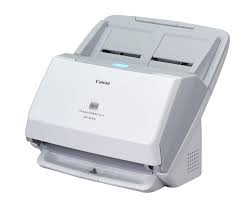 Scanning is an Important Part of an EHR Implementation
Scanning is an Important Part of an EHR Implementation
For small practices, moving from a paper medical record system to an electronic medical record system, scanning documents play an important role in a successful implementation. The planning stages of your implementation project will include determining what information will move from paper to digital. And of that information that is moving, just how will it be integrated in the new system? From all to nothing, there are a lot of options you could incorporate, but you should determine what will be the best for your practice. Consider your paper record inventory and make a plan for what and how information will be transferred to your new electronic health record system (EHR). This plan might differ if you have already selected your EHR or are in the stages of EHR selection. If you have already selected your EHR some of your wants on record migration might have limitations of the system. If you are now selecting take into consideration what the system’s capabilities are with importing data and unstructured patient history.
What information should you move to the new system and how will you move it? Your new EHR system wants to store your patient’s health information in discrete data sets and structure. Your paper charts are words, phrases, and paragraphs of written information known as non-structured or unstructured data. Is it practical to move all your paper information into your new system filling all the fields to create structured data history on all your patients? Not practical, efficient, or financially sensible. Is it practical to not move any of your paper information into your new system and just continue to carry your charts along with using your new system? Obviously the least cost solution to the problem but this is very inefficient and over time you will see very costly too. Maintaining two systems puts a strain on labor and your workflow.
So the solution for you will be somewhere in the middle of all or nothing. Determining what information you what to have all the time, for what patients, and does that information need to be structured or can it be a scanned image you can just refer to, are the keys to your plan. Remember that capturing the discrete data of the patient’s allergy and medication lists are a requirement for attestation of meaningful use.
The scan what you need approach makes the most sense and will prove the most efficient and least costly over time. As you begin to use your new system, scanning and entering information for upcoming follow-up patients can be incorporated in your workflow. Work on returning patient records the days prior to their visit if you have not already preloaded your records. Scan the information for the patient that you have determined essential for patient care. Enter or upload data that is required to be structured. As you move your patient’s information from the paper chart remember to recategorize that chart as to what was entered electronically.
A great resource I have found on scanning medical records for an EHR implementation is from The National Learning Consortium (NLC). Chart Migration and Scanning Checklist was developed for the NLC by the Health Information Technology Research Center (HITRC). It is included on HealthIT.gov in step 4 of How to Implement EHRs. The document contains two sections, one on scanning and preloading data and the other on chart migration. The Scanning and Preload Checklist details and guides you through your planning, workflow, and execution of scanning your paper records. The Chart Migration Facesheet will help you determine the structured information you will be moving and entering.
So take the time to plan your move from paper charts to electronic heath records. Scanning will be an important part of the implementation and on-going use of your EHR as you change to a paperless practice. Build in your scanning processes into your workflow and be sure to have your scanners in the right physical locations and staff is trained to use them correctly and efficiently. This will save you time and money in the long run.
This post was sponsored by Canon U.S.A. Inc. With a combination of performance, convenience, and flexibility, the Canon imageFORMULA DR-M160 scanner is a compact document imaging solution for office environments. Its user-friendly design, high-quality image processing, reliable item handling, and intelligent software offer end-to-end options for capturing, converting, communicating, and controlling business information.
